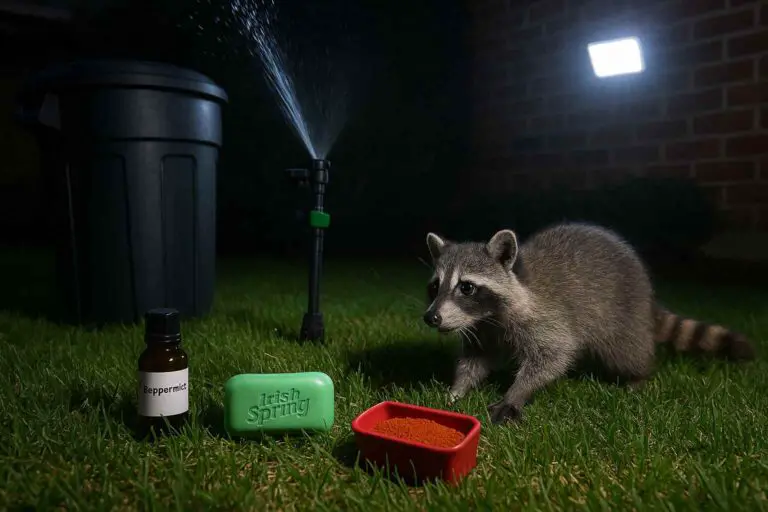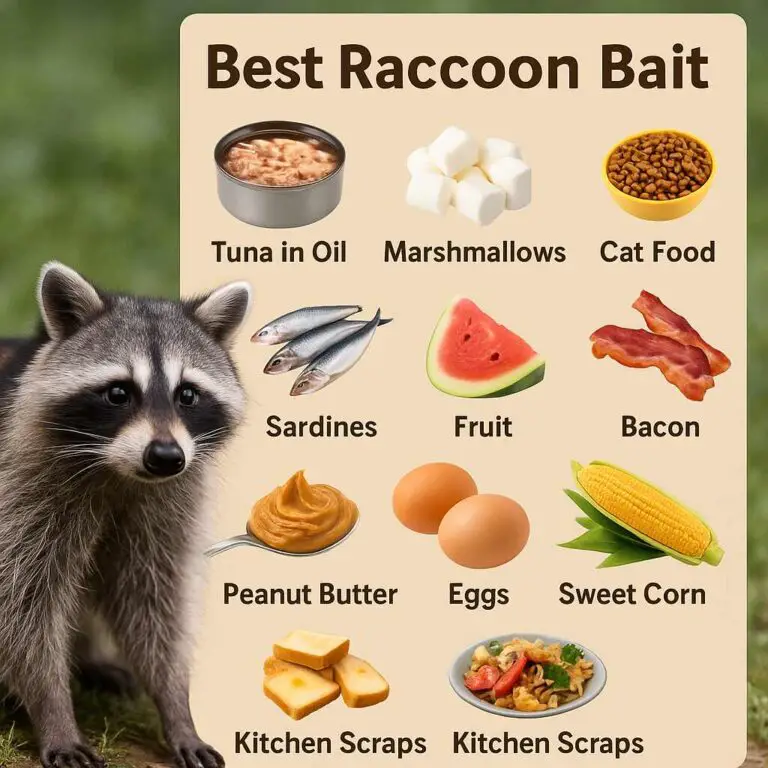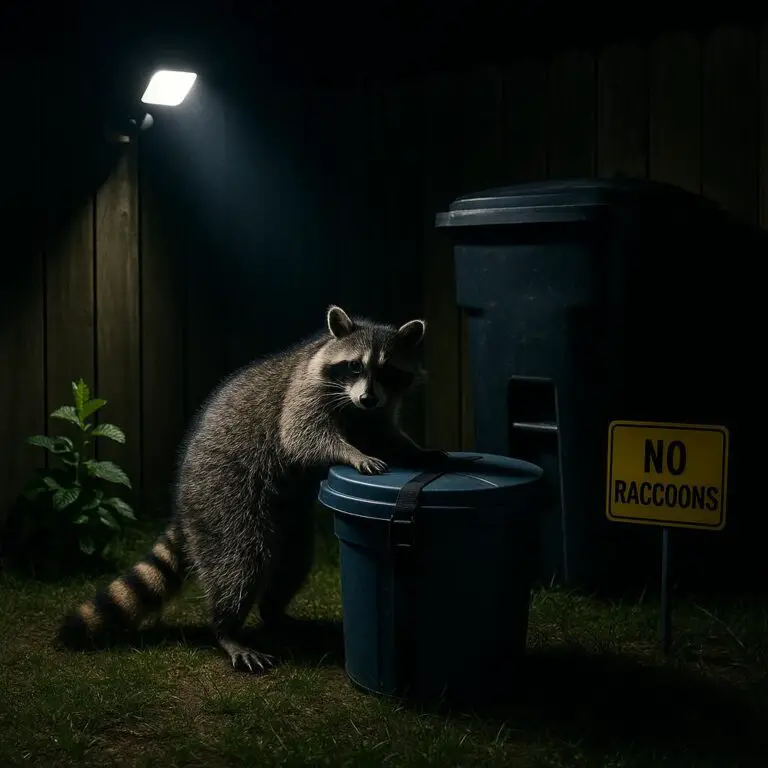Raccoons, with their distinctive black mask and ringed tails, are among the most recognizable and enigmatic wildlife species in North America. These clever and adaptable creatures have a rich behavioral repertoire that has fascinated researchers and wildlife enthusiasts for years.
Let’s dive into the intricate raccoon behavior, shedding light on their habits, social structure, and the fascinating ways in which they interact with their environment.
Introduction to Raccoons
Raccoons, scientifically known as Procyon lotor, are native to North America and are widely distributed across the continent, from southern Canada to Panama. These medium-sized mammals are known for their distinctive physical features, including a masked face, ringed tail, and robust bodies. Their fur is typically grayish-brown with a dense undercoat for insulation.
Raccoons are highly adaptable animals that can thrive in a variety of habitats, including forests, wetlands, urban areas, and suburban neighborhoods. This adaptability is partly due to their diverse diet, which includes a wide range of foods such as fruits, vegetables, insects, small mammals, fish, and even human food scraps. Their foraging habits and omnivorous diet have contributed to their success in both natural and human-altered landscapes.
Nocturnal Behavior
One of the most well-known aspects of raccoon behavior is their nocturnal activity. Raccoons are primarily active during the night, which means they sleep during the day and become active as dusk falls. This nocturnal behavior is an adaptation to avoid predators and human disturbances, as well as to take advantage of the reduced competition for food resources during nighttime.
During the day, raccoons seek refuge in dens, which can be tree hollows, rock crevices, or even man-made structures such as attics and crawl spaces. These dens provide protection from harsh weather and potential threats. Raccoons are known to be opportunistic when it comes to choosing den sites, and they often select locations that offer both security and easy access to food.
Foraging and Diet
Raccoons are opportunistic feeders with a diverse diet that varies by season and location. They have a highly developed sense of touch and dexterity, which allows them to manipulate objects and food items with remarkable precision. Their front paws are especially adapted for grasping and handling objects, almost resembling human hands.
In the wild, raccoons may consume berries, nuts, insects, small mammals, amphibians, and birds. They are known for their ability to raid bird nests and turtle nests for eggs. In urban areas, raccoons are notorious for scavenging through garbage cans and compost piles in search of human food scraps. This adaptability to different food sources has contributed to their successful colonization of urban environments.
Raccoons are known to wash their food before eating it, a behavior that has given rise to the common misconception that they are washing their food to clean it. In reality, this behavior, known as “dousing” or “washing,” is a sensory activity. Raccoons have sensitive nerve endings in their paws, and wetting their food allows them to better assess its texture and quality.
Social Structure and Behavior
Raccoons are generally solitary animals, and their social structure is characterized by loose associations rather than stable family groups. However, they are not entirely solitary and can exhibit some degree of social behavior, especially during certain times of the year.
Mating and Reproduction
During the breeding season, which typically occurs in late winter to early spring, raccoons become more social as males seek out females for mating. Males may travel long distances in search of receptive females, and competition among males for mating opportunities can be intense. Once a male and female pair up, they may spend several days together before parting ways.
Female raccoons, known as sows, give birth to their litters in dens, usually in April or May. A typical raccoon litter consists of two to five kits, although litters of up to seven or eight kits have been reported. The kits are born blind and helpless, and their eyes do not open until they are about three weeks old. During this time, the mother provides care and protection, while the male may move on to seek other mating opportunities.
Maternal Care
Raccoon mothers are dedicated caregivers, and they invest a significant amount of time and effort in raising their young. They are known to be fiercely protective of their kits and will defend them vigorously if threatened. The mother provides milk and warmth to her kits and gradually introduces them to solid food as they grow.
The kits’ eyes open at around three weeks of age, and they become more mobile and curious about their surroundings. At this point, the mother may begin to take them on short foraging trips to teach them how to find food. As the kits grow, they become increasingly independent and start to explore the world outside the den.
Dispersal and Independence
By the time raccoon kits are three to four months old, they are weaned and fully capable of foraging on their own. This marks the beginning of the dispersal phase, during which young raccoons, known as juveniles, leave their mother’s territory in search of their own home ranges. Dispersal can be a perilous time for young raccoons, as they are more vulnerable to predation and accidents while they establish themselves in new areas.
Juvenile raccoons often form loose groups or “gangs” during the dispersal phase. These groups provide some protection and social interaction during a period of increased vulnerability. However, as they mature and establish their own territories, raccoons generally become more solitary in their habits.
Home Range and Territorial Behavior
Raccoons are known to have home ranges that they defend against intruders of the same sex. The size of a raccoon’s home range can vary widely depending on factors such as food availability, habitat quality, and population density. In areas with abundant food, home ranges may be smaller, while in areas with limited resources, raccoons may need to cover larger territories.
Territorial behavior is most pronounced among adult males, who are more likely to defend exclusive territories. These territories often overlap with those of several females, giving males access to potential mating partners. Territorial disputes among raccoons can be intense and may involve vocalizations, physical confrontations, and scent marking.
Communication
Raccoons communicate with each other through a combination of vocalizations, body language, and scent marking. While they are not known for their vocal range, raccoons can produce a variety of sounds, including hisses, growls, and chattering noises. These vocalizations are used in various social contexts, such as mating displays, territory disputes, and interactions between mothers and their young.
Body language also plays a crucial role in raccoon communication. They use postures, gestures, and facial expressions to convey information about their intentions and emotional states. For example, an upright posture with raised fur can signal aggression or defensiveness, while a relaxed, hunched posture may indicate submission or relaxation.
Scent marking is another important aspect of raccoon communication. Raccoons have specialized scent glands located on their cheeks, paws, and around their anal region. They use these glands to leave scent marks on objects in their territory, such as trees, rocks, and logs. Scent marking helps raccoons establish dominance, signal reproductive status, and communicate with other raccoons in the area.
Adaptations to Urban Environments
One of the most remarkable aspects of raccoon behavior is their ability to thrive in urban and suburban environments. As human development has expanded, raccoons have shown a remarkable capacity to adapt and exploit the resources provided by human communities.
Foraging in Human Habitats
Raccoons have become well-known for their ability to raid garbage cans, dumpsters, and compost piles in search of food. Their dexterous front paws allow them to open lids and manipulate objects, making them formidable scavengers in urban areas. This behavior has led to conflicts between raccoons and humans, as homeowners often have to contend with raccoons rummaging through their trash.
Climbing and Navigating Urban Structures
Raccoons are excellent climbers and can easily scale trees, fences, and buildings. Their strong limbs and sharp claws give them the agility to access elevated food sources, evade predators, and navigate complex urban landscapes. It’s not uncommon to see raccoons on rooftops, balconies, or tree branches in urban areas.
Adaptations for Survival
In urban environments, raccoons face unique challenges and opportunities. They must contend with increased exposure to vehicles, domestic pets, and human activities. However, they have also found new sources of food and shelter. Raccoons are known to take advantage of man-made structures, such as attics, chimneys, and crawl spaces, as den sites. These spaces provide protection from predators and the elements.
Raccoon Intelligence
Raccoons are renowned for their intelligence and problem-solving abilities. Their curious and inquisitive nature drives them to explore and interact with their environment in creative ways. Researchers have conducted numerous studies to better understand raccoon intelligence and cognitive abilities.
Problem Solving
One of the most famous examples of raccoon intelligence comes from a study conducted by ethologist H. B. Davis in the early 1900s. In this study, raccoons were presented with a series of complex locks and latches that they had to manipulate to access food rewards. The raccoons quickly learned to unlock the mechanisms, demonstrating their ability to solve novel problems and remember solutions over time.
Tool Use
Raccoons have also been observed using tools in the wild. For example, they have been seen breaking open clams by dropping them from heights onto hard surfaces, such as rocks or pavement. This behavior suggests a level of problem-solving and tool use that is relatively rare among mammals.
Learning and Memory
Raccoons are known to have good spatial memory, which helps them remember the locations of food sources and den sites. They are also quick learners and can adapt their behavior in response to changing circumstances. This adaptability is one of the reasons they are so successful in a variety of environments, including urban areas.
Raccoons as Disease Vectors
While raccoons are fascinating creatures with unique behaviors, they are also important in the context of public health and wildlife management. Raccoons can carry diseases that can be transmitted to humans and domestic animals, including rabies, leptospirosis, and roundworm.
Rabies
Raccoons are known reservoirs of rabies, a viral disease that affects the central nervous system. While not all raccoons carry rabies, it is a significant concern because it can be transmitted to humans through bites or scratches. As a result, wildlife agencies and health authorities monitor and manage raccoon populations to prevent the spread of rabies.
Leptospirosis
Leptospirosis is a bacterial disease that can be transmitted to humans through contact with contaminated water or soil. Raccoons can carry the bacteria responsible for leptospirosis, and their presence in urban areas can increase the risk of human exposure. Proper sanitation and hygiene are essential for reducing the risk of infection.
Roundworm
Raccoon roundworm, also known as Baylisascaris procyonis, is a parasitic worm found in raccoon feces. Accidental ingestion of roundworm eggs can lead to a severe and potentially fatal infection in humans. It is crucial to avoid contact with raccoon feces and to practice good hand hygiene when dealing with potentially contaminated areas.
Raccoons in Culture and Conservation
Raccoons hold a special place in the cultural and ecological landscape of North America. They have been featured in folklore, literature, and popular media, often portrayed as clever and mischievous characters. In some Indigenous cultures, raccoons are seen as trickster figures with both positive and negative attributes.
Role in Ecosystems
Ecologically, raccoons play important roles as both consumers and seed dispersers. Their diverse diet includes a variety of plant and animal species, making them essential for controlling populations of insects and small mammals. Additionally, raccoons help disperse seeds by eating fruits and then depositing the seeds in different locations through their feces.
Conservation and Management
Raccoons are considered a species of least concern by the International Union for Conservation of Nature (IUCN), indicating that their populations are stable and not currently at risk of extinction. However, their adaptability to urban environments can sometimes lead to conflicts with humans, particularly when they damage property or pose disease risks.
Wildlife management strategies often focus on finding a balance between raccoon conservation and minimizing conflicts with human activities. This can involve measures such as securing garbage cans, sealing potential den sites, and implementing public education programs on coexisting with wildlife.
Conclusion
Raccoons are remarkable creatures with a wide range of behaviors and adaptations that have enabled them to thrive in diverse environments, from forests and wetlands to bustling urban areas. Their nocturnal activity, diverse diet, and clever problem-solving abilities make them intriguing subjects for scientific study and observation.
While raccoons have adapted to life in proximity to humans, they also present challenges in terms of disease transmission and property damage. Understanding raccoon behavior and ecology is essential for effective wildlife management and coexistence with these enigmatic animals.
Whether they are raiding garbage cans in the suburbs or foraging for berries in the wild, raccoons continue to capture our curiosity and imagination, serving as a testament to the resilience and adaptability of wildlife in an ever-changing world. As we learn more about their behavior and ecological roles, we gain a deeper appreciation for the fascinating lives of these charismatic mammals that share our landscapes.








